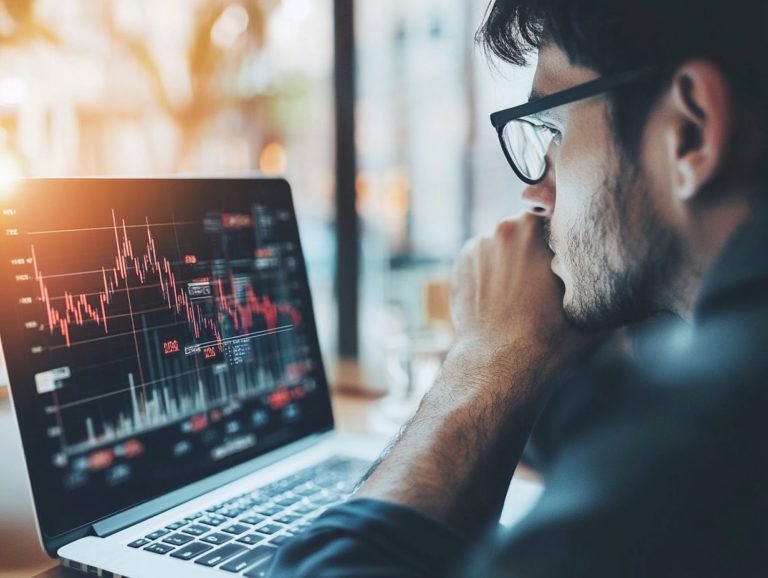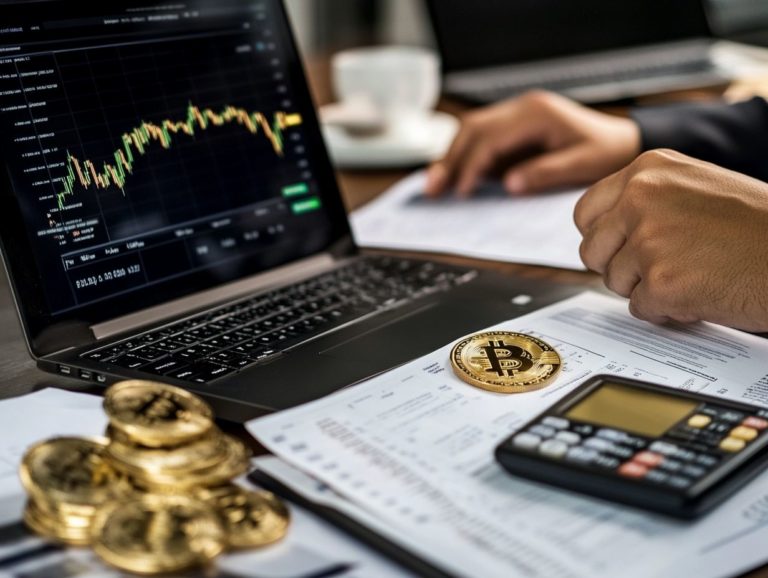Best Practices for Managing Risk in Collectibles
Collectibles present an enticing opportunity for investment, blending emotional satisfaction with the potential for financial rewards. However, the realm of collectibles is not without its hazards, which can threaten both value and safety.
To navigate this landscape effectively, it’s crucial for you to understand these risks, accurately assess the true worth of your items, and take proactive steps to safeguard your collection.
This article delves into the best practices for managing risk in the collectibles arena, covering essential topics such as:
- Insurance options
- Safe handling techniques
- The advantages of diversifying your collection
Stay informed and protect your investment as you explore the essentials of risk management in the collectibles market.
Contents
- Key Takeaways:
- The Importance of Risk Management in Collectibles
- Assessing the Value of Collectibles
- Insuring Your Collectibles
- Protecting Your Collection from Physical Damage
- Minimizing Risk in Buying and Selling Collectibles
- Diversifying Your Collection
- Staying Informed and Up-to-Date
- Preguntas Frecuentes
- Cu les son las mejores pr cticas para gestionar el riesgo en coleccionables?
- C mo puedo determinar el valor de mercado de un coleccionable?
- Deber a asegurar mis coleccionables?
- C mo puedo proteger mis coleccionables de da os?
- Qu debo hacer si quiero vender mi coleccionable?
- Con qu frecuencia debo reevaluar el valor de mis coleccionables?
Key Takeaways:
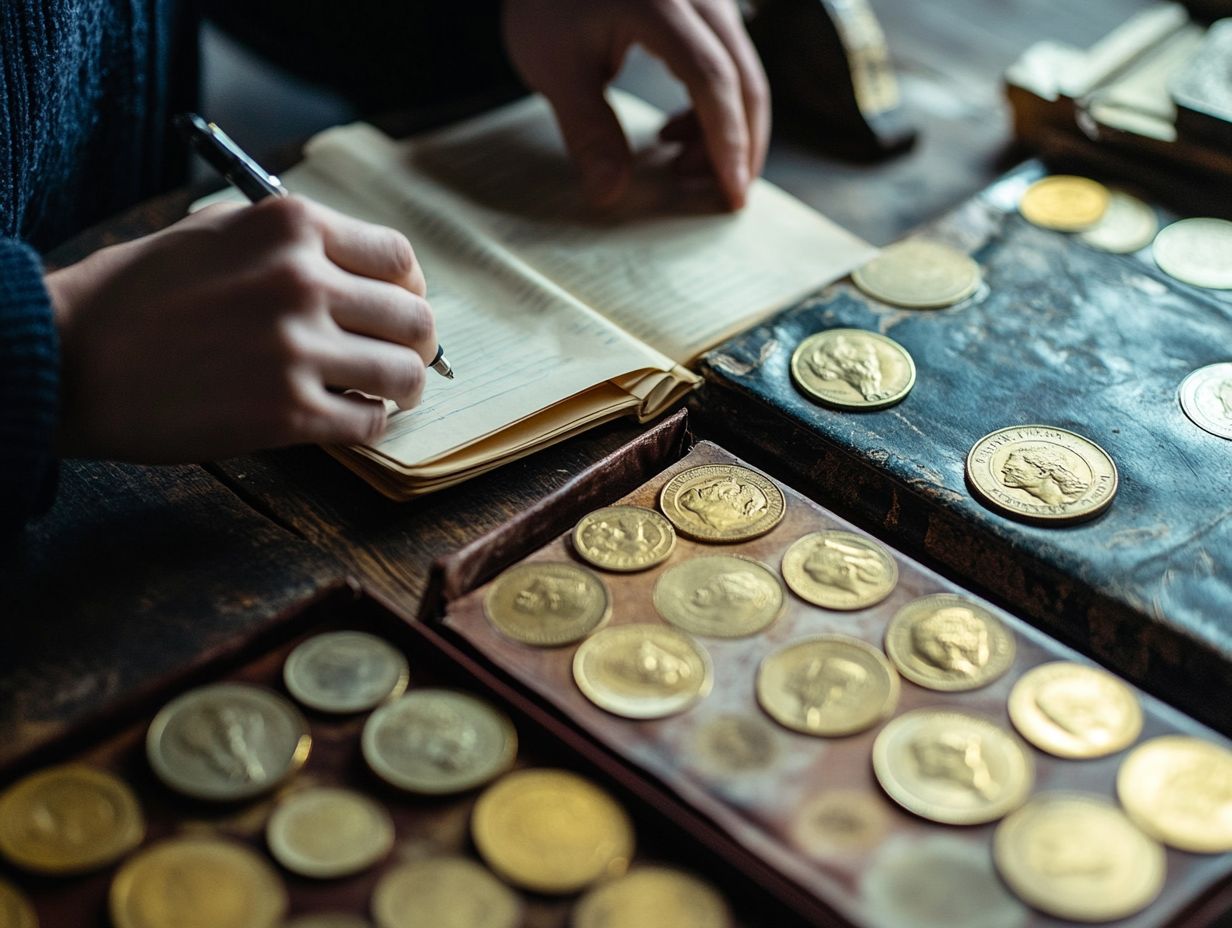
Understand the potential risks of investing in collectibles to make informed decisions. Properly assess the value of your collectibles and insure them to protect against potential financial losses. Take precautions to minimize risks when buying, selling, and storing collectibles to maintain their value.
The Importance of Risk Management in Collectibles
Effective risk management in collectibles is essential for you, whether you’re a novice or a seasoned investor. It doesn’t just protect your assets; it also enhances your potential for financial returns, especially in a market that can change on a dime. Exploring strategies for reducing risk in art investments can further improve your investment approach.
With collectibles spanning art, antiques, trading cards, and sports memorabilia, you need to be aware of market volatility. Understanding these risks gives you the power to tackle challenges like fraud and the tax on the profit made from selling items head-on.
By adopting strong risk management strategies, you can enhance both the emotional value and buyer perception of your investments while ensuring the security and integrity of your cherished collection.
Understanding the Risks Involved
Understanding the risks associated with collectibles investing is crucial for crafting a successful investment strategy while safeguarding your interests against market fluctuations.
It’s not just about price swings; various types of risks can significantly impact the stability and growth of your collectible assets.
You ll encounter market volatility, where the value of items like rare stamps, vintage toys, or exquisite pieces of fine art can oscillate wildly based on shifting buyer interests.
The risk of fraud is also a concern, where counterfeit items can tarnish your reputation and financial standing.
Economic conditions also play a pivotal role; during recessions, the demand for high-value items tends to decline, potentially leading to sharp depreciation.
These risks shape buyer preferences often steering you toward established brands or compelling origin stories and influence your investment outcomes. Therefore, conducting careful research and making thoughtful choices is essential before plunging into this alluring yet unpredictable market.
Assessing the Value of Collectibles
Assessing the true value of collectibles demands a nuanced understanding of multiple factors that influence item worth, such as rarity, condition, and prevailing market trends.
This knowledge is essential for both collectors and investors.
Whether you re diving into trading cards, comic books, or vintage cars, an in-depth appraisal process can uncover valuable insights that enhance your profit potential and guide you through the complexities of the collectibles market.
Don’t let fraud catch you off guard! Invest wisely and prepare yourself for an exciting adventure in the world of collectibles!
Factors that Affect Value
Several factors significantly influence the value of your collectibles. These include condition, rarity, market trends, and buyer preferences all of which are crucial in the collectibles industry.
For instance, the condition of an item, whether it’s in pristine shape or shows signs of wear, can drastically impact its worth. Consider vintage comic books; a mint condition copy of a rare issue can fetch thousands, while one that s well-loved may only attract a fraction of that price.
Rarity is another key factor. Limited edition items often command higher prices due to their scarcity. Market trends can greatly change how much items are worth. You might notice a surge in popularity for certain toy collections during economic booms, while more stable collectibles like classic coins tend to hold their value, no matter the market’s ups and downs.
Buyer preferences can shift over time, influencing what items are considered valuable. Economic conditions are equally important; during recessions, collectors might become more cautious, opting for lower-priced items or even selling off their collections. During flourishing economies, collectors may indulge in higher-end pieces.
Insuring Your Collectibles
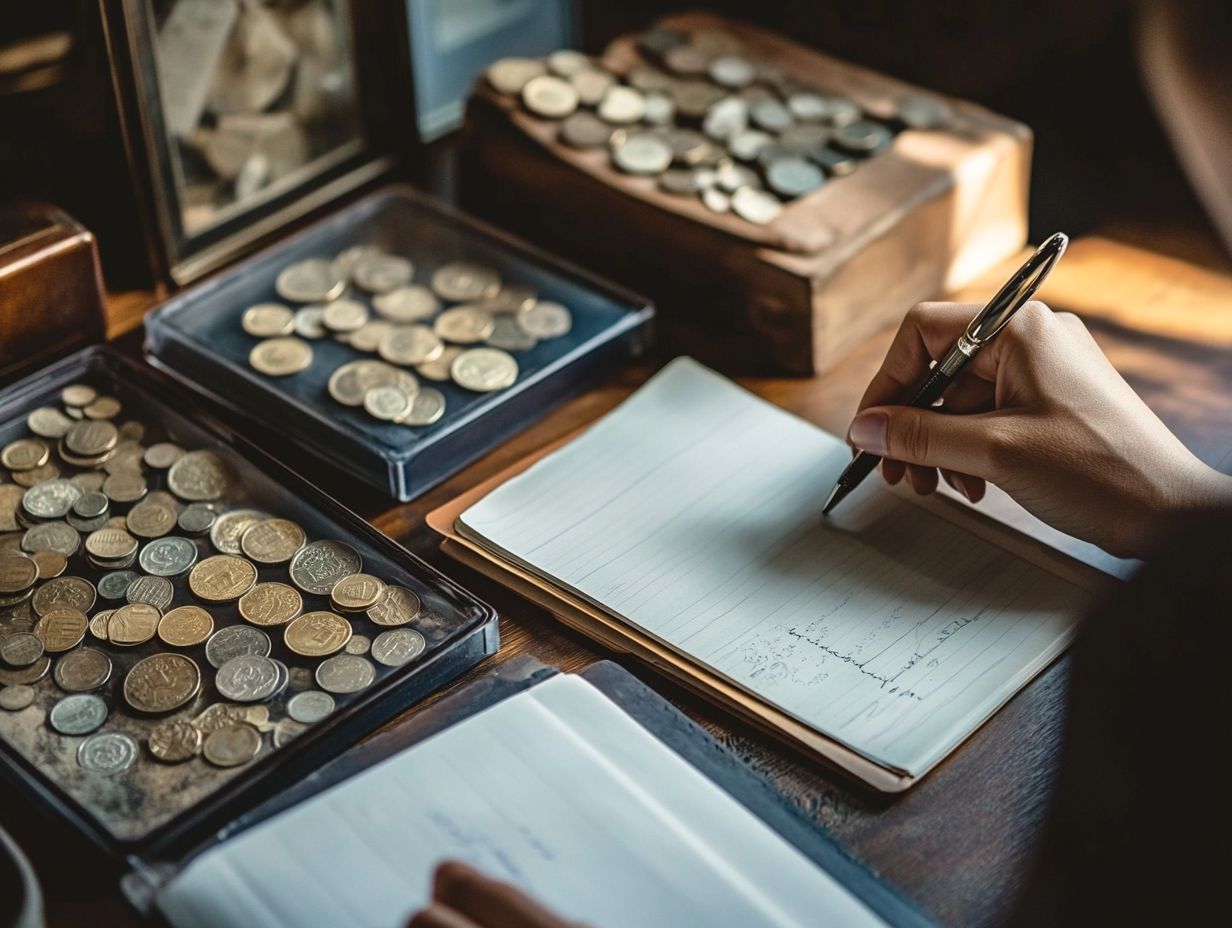
Insuring your collectibles is essential for safeguarding your valuable assets. It provides coverage against unexpected events and peace of mind for collectors and investors alike.
With a range of insurance options available, understanding the intricate details of each type of coverage and the significance of thorough documentation can significantly bolster your security measures in the collectibles community.
Types of Insurance Coverage
You have a variety of insurance coverage options for your collectibles, including specialized policies designed to address specific risks like theft, damage, and loss of value over time.
These policies are not one-size-fits-all; they allow you to tailor your coverage according to the unique needs and values of your items. For example, an art collector may find their needs differ significantly from those insuring vintage toys or rare coins.
Accurate appraisals are crucial in determining the appropriate levels of protection. An item s value can fluctuate with changing market trends. As these trends shift perhaps influenced by economic changes or increasing demand you might discover that your existing coverage amounts no longer align with the current value of your collectibles.
This realization may prompt you to adjust your premiums and policy terms to ensure you have optimal protection in place.
Protecting Your Collection from Physical Damage
Safeguarding your collection from physical damage is essential for preserving its value and integrity. This involves adopting proper storage solutions and handling techniques that suit the specific types of collectibles you own.
As the collectibles market experiences its ups and downs, employing effective protection strategies will not only shield your investment but also position it for appreciation over time.
Proper Storage and Handling Techniques
Proper storage and handling techniques are crucial for protecting your collectibles. They ensure your items not only endure but also maintain their emotional value against potential damage.
Understanding the specific needs of various collectibles can greatly influence their lifespan. For example, fragile paper items like stamps and vintage comics flourish in environments with stable humidity levels ideally between 30% to 50% to prevent oxidation and warping.
On the other hand, coins and metals prefer cool, dry spaces to avoid tarnishing. Be mindful of light exposure; ultraviolet rays can gradually fade colors, making opaque storage solutions or specialized display cases a smart investment.
By adhering to these best practices, you ll be able to preserve the condition and integrity of your treasured items, safeguarding the stories and memories that make them so valuable to you.
Minimizing Risk in Buying and Selling Collectibles
Minimizing risk when buying and selling collectibles is crucial for ensuring safe transactions. It fosters a positive perception among buyers, especially in an arena where fraud can lurk around every corner.
By grasping market trends and employing effective strategies, you can adeptly navigate the auction landscape and enhance your investment outcomes.
Tips for Safe Transactions
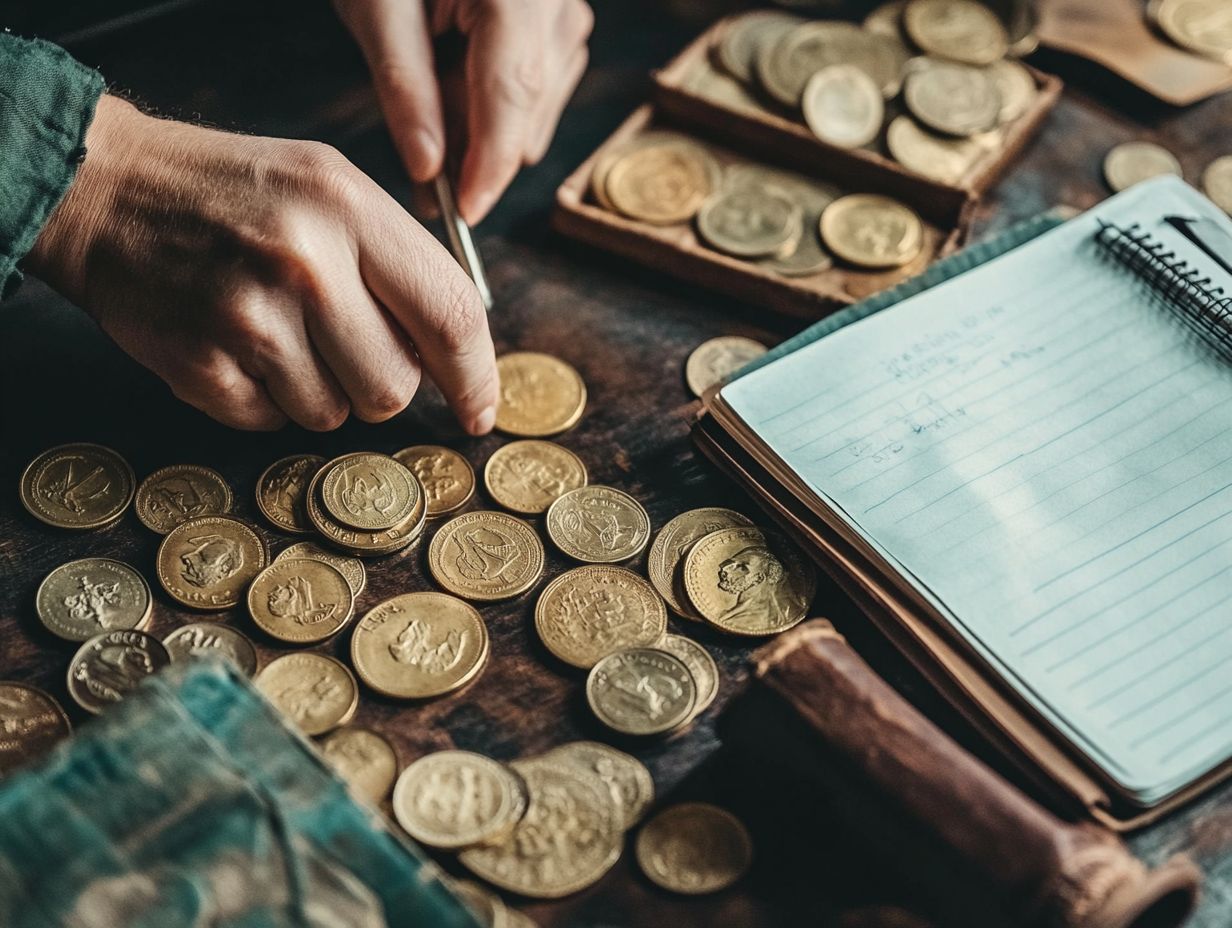
When engaging in transactions involving collectibles, you can enhance safety and ensure that buyer preferences are respected, especially in the realm of auctions.
To begin, verifying the authenticity of each item is essential; always request certificates of authenticity or provenance documents whenever possible.
Sellers can significantly build trust by offering detailed descriptions, high-quality images, and transparent pricing. Maintaining open lines of communication clarifies expectations and fosters a positive relationship.
For example, a recent case study revealed that sellers who promptly addressed buyer inquiries received 30% more bids than those who delayed their responses.
Being aware of current market trends will guide both you and the seller in setting reasonable prices, ensuring transactions are mutually beneficial and satisfying.
Diversifying Your Collection
Diversifying your collection is a savvy strategy that can elevate your potential profits while effectively managing risk within the collectibles market.
This approach opens up a broader spectrum of alternative investments. By incorporating different types of collectibles, you can tap into both emotional value and prevailing market trends, ultimately maximizing your returns on investment.
Benefits of a Diverse Collection
The advantages of building a varied collection extend well beyond simple visual appeal; they offer significant benefits in market trends, emotional resonance, and effective risk management.
By incorporating a variety of items, you can adeptly navigate fluctuations in demand. Certain collectibles may enjoy surges in popularity depending on the market climate.
During economic downturns, more affordable collectibles often attract heightened interest, while luxury items may take a backseat.
This versatility not only safeguards the overall value of your collection but also gives you the power to shift your focus in response to evolving buyer preferences, ensuring you stay relevant and attuned to new trends in the collectible landscape.
Staying Informed and Up-to-Date
Staying informed and up-to-date with current market trends is essential for you as a collector or investor, allowing you to optimize financial returns and adapt to the ever-evolving preferences of buyers.
Engaging with the collectibles community and tapping into reliable sources of information will greatly enhance your understanding and refine your strategy.
Keeping Track of Market Trends and Changes
Keep an eye on market trends to sharpen your investment strategies and ensure they align with economic conditions.
Stay informed through reputable news outlets to gain valuable insights into new trends and changes in consumer preferences.
Engaging in discussions within the collectibles community, whether through forums or social media groups, offers rich feedback and diverse perspectives.
Leveraging online auction platforms allows you to observe real-time fluctuations in prices and demand.
Collectively, these methods inform your strategic decisions and give you the power to make purchasing choices that reflect current market dynamics.
Preguntas Frecuentes
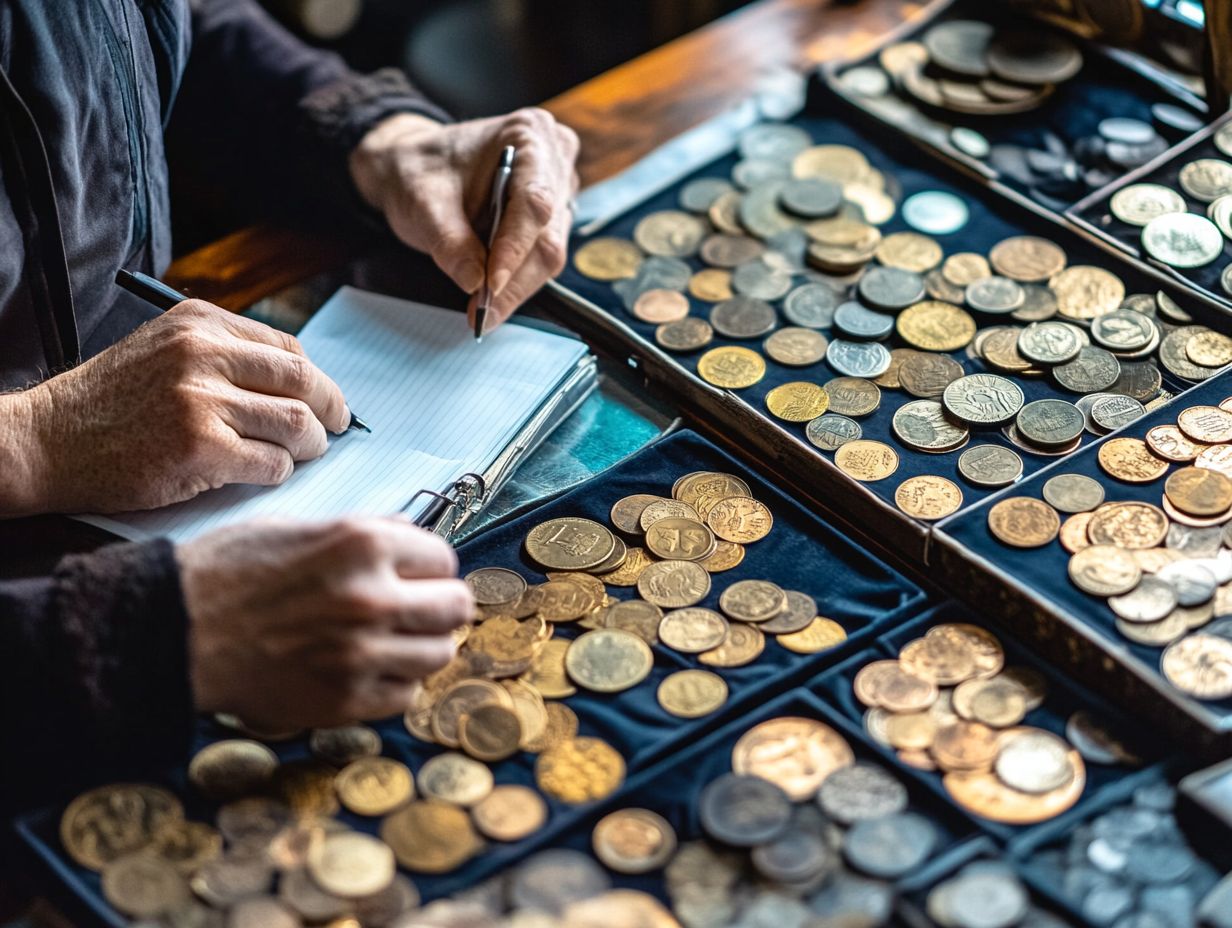
Cu les son las mejores pr cticas para gestionar el riesgo en coleccionables?
- Investigar el valor de mercado y la demanda del coleccionable antes de comprarlo.
- Establecer un presupuesto para la compra y mantenimiento del coleccionable.
- Asegurar el coleccionable para protegerlo contra da os o p rdidas.
- Mantener un registro detallado de la compra y la historia de venta del coleccionable.
- Almacenar el coleccionable en un lugar seguro y protegido.
- Monitorear y reevaluar regularmente el valor del coleccionable.
To stay updated and informed, consider signing up for our newsletter for the latest insights and trends in the collectibles market!
C mo puedo determinar el valor de mercado de un coleccionable?
Para determinar el valor de mercado de un coleccionable, investiga ventas recientes de art culos similares.
Consulta con un tasador, que es un experto que estima el valor de los bienes. Tambi n verifica los precios en mercados en l nea y sitios de subastas.
Considera cualquier caracter stica nica o rara de tu coleccionable.
Deber a asegurar mis coleccionables?
S , aseg rate de proteger tus coleccionables contra da os, p rdidas o robos.
Revisa tu p liza de seguro cuidadosamente. Aseg rate de que cubra adecuadamente tus art culos valiosos.
C mo puedo proteger mis coleccionables de da os?
Protege tus tesoros! Aqu te damos algunos consejos:
Manipula los coleccionables con cuidado. Evita tocarlos en exceso o exponerlos a la luz.
Mantenlos en un lugar limpio y seco para prevenir moho. Usa cubiertas protectoras o vitrinas para evitar rasgu os.
Evita almacenar tus coleccionables en lugares con cambios extremos de temperatura o humedad.
Qu debo hacer si quiero vender mi coleccionable?
Si quieres vender tu coleccionable, consulta con un tasador para saber su valor actual.
Investiga posibles compradores o casas de subastas que se especialicen en tus art culos. Prepara documentaci n y establece un precio realista.
Con qu frecuencia debo reevaluar el valor de mis coleccionables?
Reevaluar el valor de tus coleccionables anualmente es una buena pr ctica.
Si hay cambios en el mercado, considera hacerlo con m s frecuencia.





